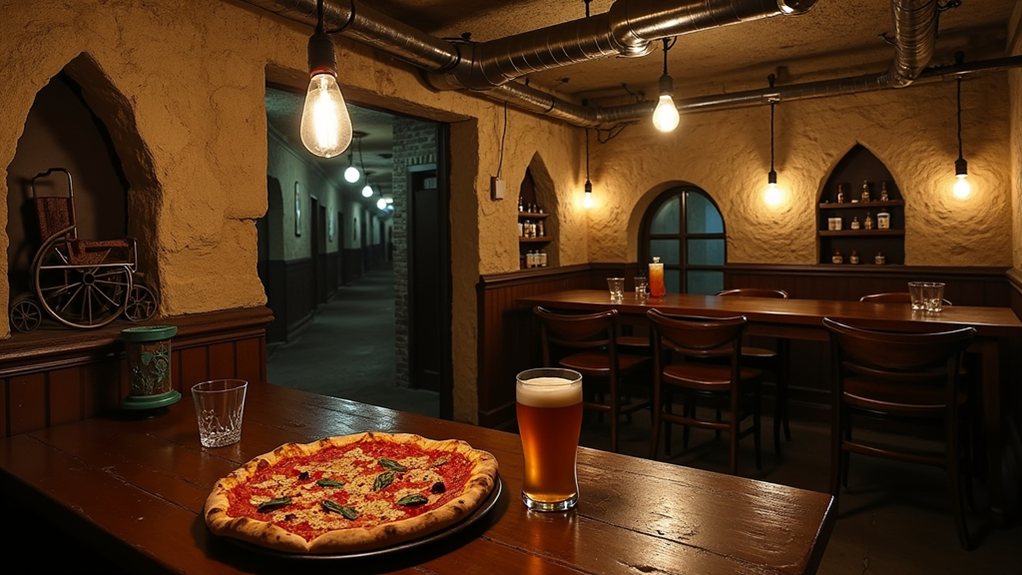The humble calzone, often living in pizza's shadow, has a fascinating history all its own. This crescent-shaped pocket of dough emerged in 18th century Naples, Italy, not as pizza's cousin but as a practical solution for workers seeking portable nourishment. While modern American interpretations have transformed these hand-held meals into restaurant staples, their working-class origins tell a different story, one where convenience trumped culinary showmanship. What exactly sparked this Italian street food transformation?
Naples' Working-Class Street Food Origins
While many people today associate calzones with oversized Italian turnovers found in American pizzerias, the true history of this iconic folded dish stretches back to 18th century Naples, Italy, where they emerged as practical street food for busy workers.
These early calzones were created by simply folding pizza dough in half to form a convenient half-moon shape before baking, making them perfectly suited for consumption on the go. Unlike today's hefty versions, traditional calzones were relatively small, comparable to a sandwich in size, which improved their portability for a walking lunch.
The name "calzone" itself offers a linguistic clue to its original purpose, as it translates to "pants leg" or "trousers" in Italian, possibly referencing how easily the food could be carried around. Like the beloved Neapolitan pizza tradition, calzones reflected the region's emphasis on simple, high-quality ingredients. Original fillings were straightforward combinations of ricotta, mozzarella, anchovies, and olives—ingredients familiar to Neapolitan pizza lovers. The authentic versions were often cooked in wood-fired ovens alongside traditional pizzas, giving them their characteristic crispy exterior.
The humble calzone's name—meaning "trouser leg" in Italian—hints at its portable design, perfect for workers carrying these simple filled pastries through Naples' busy streets.
These affordable, accessible ingredients made calzones particularly popular among working-class Italians, who needed inexpensive yet satisfying meal options during busy workdays. Traditional preparation emphasized fresh ingredients while maintaining simplicity in both form and flavor.
Though born in Naples, calzones have inspired variations throughout Italy's diverse regions. Apulia developed a distinctive deep-fried version, while Sicily's cudduruni (stuffed focaccia) shows similar culinary DNA. Each region contributed its own flavors and techniques while maintaining the core concept of a portable, filled pastry.
Italian immigrants eventually brought calzones to American shores, where they underwent significant transformation. The American interpretation evolved into something much larger and more elaborate than its Italian ancestor, with restaurants commercializing the dish and adding toppings like garlic, olive oil, and parsley.
This cultural exchange represented just one facet of the broader Italian culinary influence on American food culture.
Popular media further cemented calzones in American food consciousness, particularly through a 1996 episode of "Seinfeld" that highlighted the dish as a convenient alternative to pizza. This television exposure introduced many Americans to calzones, helping transform what was once a humble Neapolitan street food into a mainstream menu item across the United States. The doughy exterior served as a practical edible container that prevented messy spillage while walking through busy streets.






